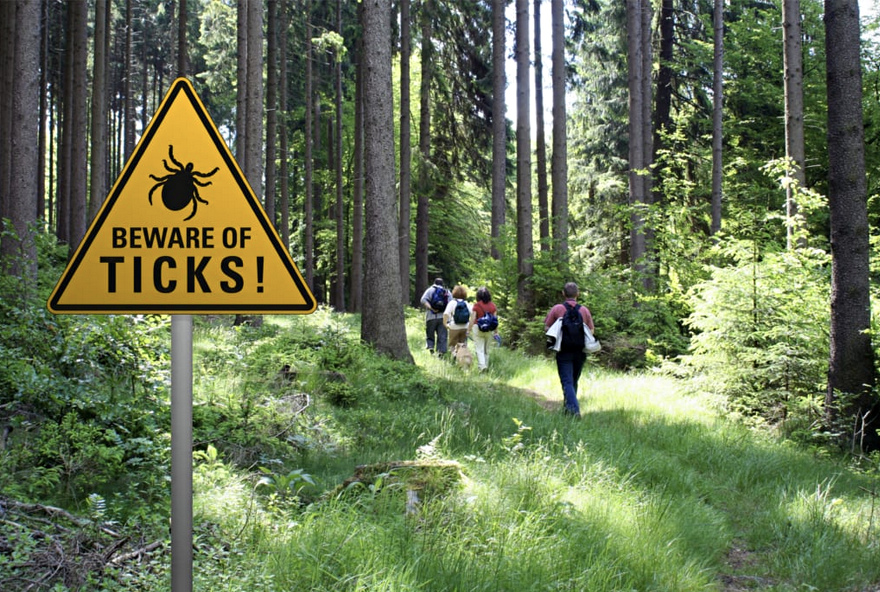
Can you even see the four tiny tick larvae to the right of this penny? A friend took this photo of his pants, which had these tiny ticks all over. He probably had walked into a “nest” of recently hatched ticks. While ticks this small probably do not carry bacteria, they soon may, after they find a host and have their first blood meal.
Ticks are a fact of life in New Jersey, whether you are a gardener, hiker, birdwatcher, golfer, or just like to walk your dog. But there is much that most people don’t know about ticks, the diseases they carry, and how to cope with them. I’m a birder, and in the course of my years in the field ticks have given me Lyme Disease (several times), Babesiosis, and recently AlphaGAL allergy. I’ve done a lot of reading and wanted to share some information that I hope will be useful.

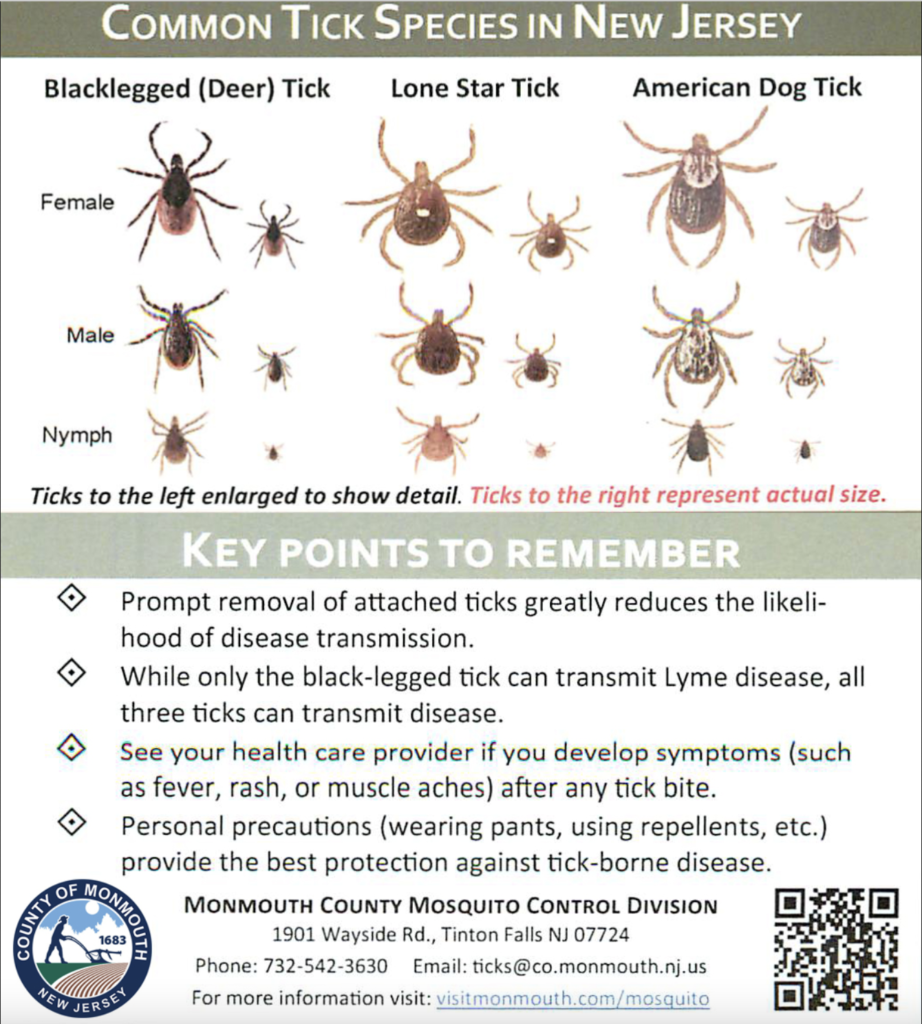
What are ticks anyway?
They’re arthropods, 8-legged “bugs” that are not insects, but are more closely related to spiders and mites. They are parasitic, and need a meal of mammalian blood three times in their life cycle. They feed on humans, pets, farm animals, or wildlife such as deer, mice, birds, rabbits, and other animals.
Where do ticks live?
Ticks favor habitat that is grassy, brushy or woodsy — but they can also be in gardens and lawns. They are most active in warm seasons; they can survive short freezes but not long cold winters. Climate warming seems to be a factor in their increase.
How does a tick get onto me or my pet?
Ticks don’t have wings; they crawl and climb with tiny hooks on their legs. They hang around on plants until an animal brushes by, then they grab on and hitch a ride. They explore the clothing, fur, or skin until they find a quiet place to attach and feed.
Do ticks cause infections?
Well, they carry infections around with them. They carry bacteria and viruses in their gut and inject some of this fluid when they bite. Because they bite several animals during their life cycle they can exchange bacteria and viruses among their hosts. They also can cause allergic reactions. Ticks are very small, especially in the larval stage, and can be difficult to detect and remove.
Ticks can transmit a long list of diseases. Not all ticks carry all the diseases, but some carry more than one. Typically Lyme Disease (Borreliosis) is carried by Deer ticks, which can also carry Babesiosis and Anaplasmosis. Rocky Mountain Spotted Fever is carried by Dog ticks and Lone Star ticks, which also carry a strange red-meat allergy called Alpha-GAL. This means that if you remove a tick from your body you should keep it so it can be identified and tested to see which pathogens it may be carrying.
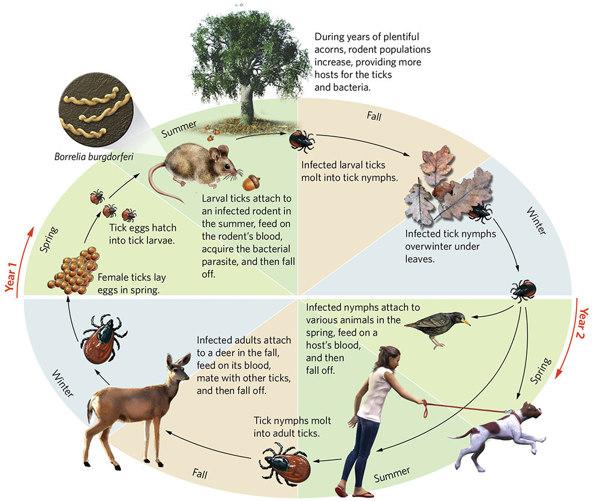
What are the symptoms of Lyme Disease?
If you have a red rash around the tick bite you have been infected. But you may not see it (for example if the bite is on your scalp) or it may not develop (40% of cases don’t). Early infection feels like a case of flu, with fever and chills, aches, headache, and tiredness. If not treated the disease may appear to get better but reappear later with a wide variety of symptoms; this is called disseminated Lyme disease. Many believe there is a third form, chronic or late lyme disease, which can persist even if treated with antibiotics. As well, there are many strains of Borrelia, and they can affect you differently (more research is needed).
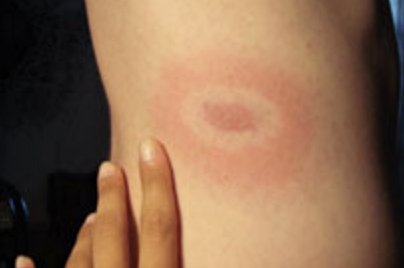
How do I remove a tick?
There are many inexpensive and easy to use products for removing ticks, or you can use fine pointed tweezers; but make sure you grab the tick as close as possible to your skin and pull straight up. Don’t squeeze the body of the tick. Put the tick in a ziplock bag labeled with the date and place you think it came from. Wash the attachment spot and your hands and tweezers with a disinfectant soap.
What should I do with it next?
Get it tested! Some doctors do not take tick bites very seriously, but if you have had one of the many tick-borne diseases, you will want to avoid a second experience. There are a number of labs which, in just a few days, will identify your tick and test it for the DNA of the most common diseases. If the results are negative, you have peace of mind. If results are positive, you should consult your doctor, and the test will help the doctor know what treatment is needed.
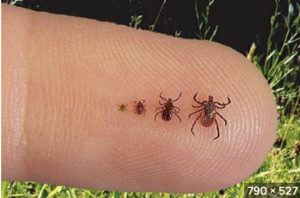
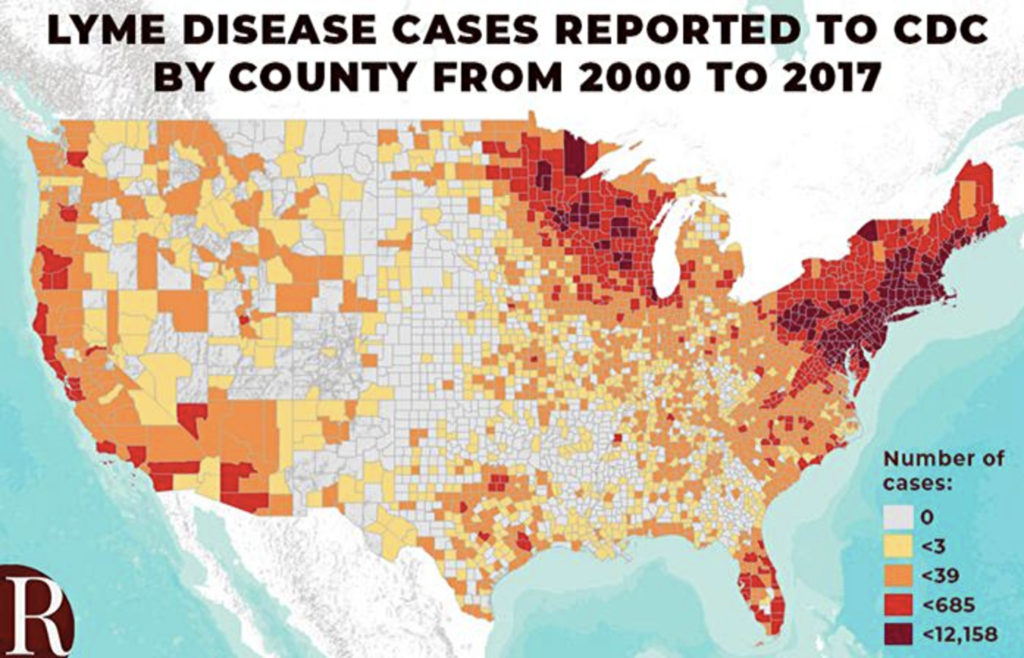
What are the other diseases ticks carry?
Babesiosis is a parasitic disease much like malaria, with high fever and muscle aches. It is treated with antibiotics and antimalarial drugs. Bartonellosis causes neurologic symptoms and gastrointestinal symptoms. Ehrlichiosis and Anaplasmosis are similar pathogens; both can cause a high fever and can be life-threatening. Alpha-GAL allergy, carried by Lone-star ticks, can cause anaphylactic reactions to red meat, dairy and other foods. (Lone Star ticks are now established in NJ, CT, and Long Island). There are other, less common diseases carried by ticks as well, including Powhassan, STARI, Rocky Mountain Spotted Fever, Tularemia.
How can I reduce my risk of tick-borne infections?
If you enjoy the outdoors, learn to avoid areas that attract ticks.
Stay on the trail if walking or hiking.
Wear long pants and socks.
Use repellents, but follow safety directions; some (such as permethrin) are quite toxic to pets.
Check yourself as soon as you get home. Take a shower, and wash your clothing.
If you find a tick, remove it, bag it, and have it tested.
If you have a severe fever, chills, or other worrisome symptoms, please see your doctor promptly.
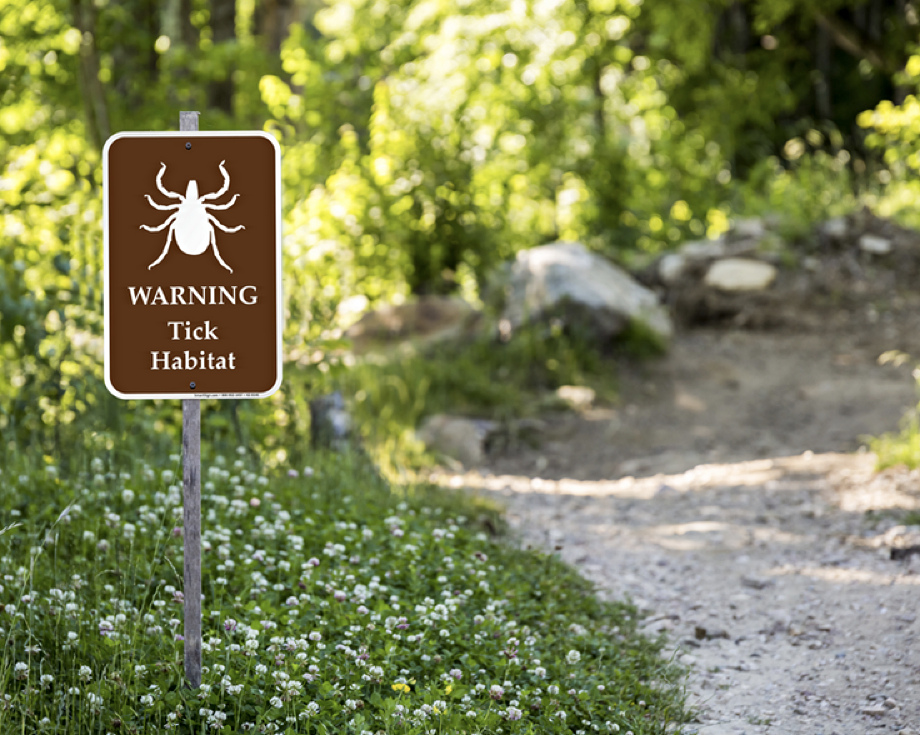
Lyme disease is controversial and much more basic research is needed.
But it is not controversial that ticks can transmit several serious illnesses, so a bite shouldn’t be ignored.
Here are some helpful links:
Resources for medical personnel and patients: ILADS
National support group for Lyme patients: Lymedisease.org
New Jersey based group: Lyme Disease Association
Tick testing labs – call for details before paying or mailing a tick.
https://www.tickreport.com/
https://testticks.com/
https://www.tickcheck.com/
https://ticktests.com/tick-testing-options
If you have read this far, thank you. Be careful out there, and stay well.
Laurie Larson
Lumberton
